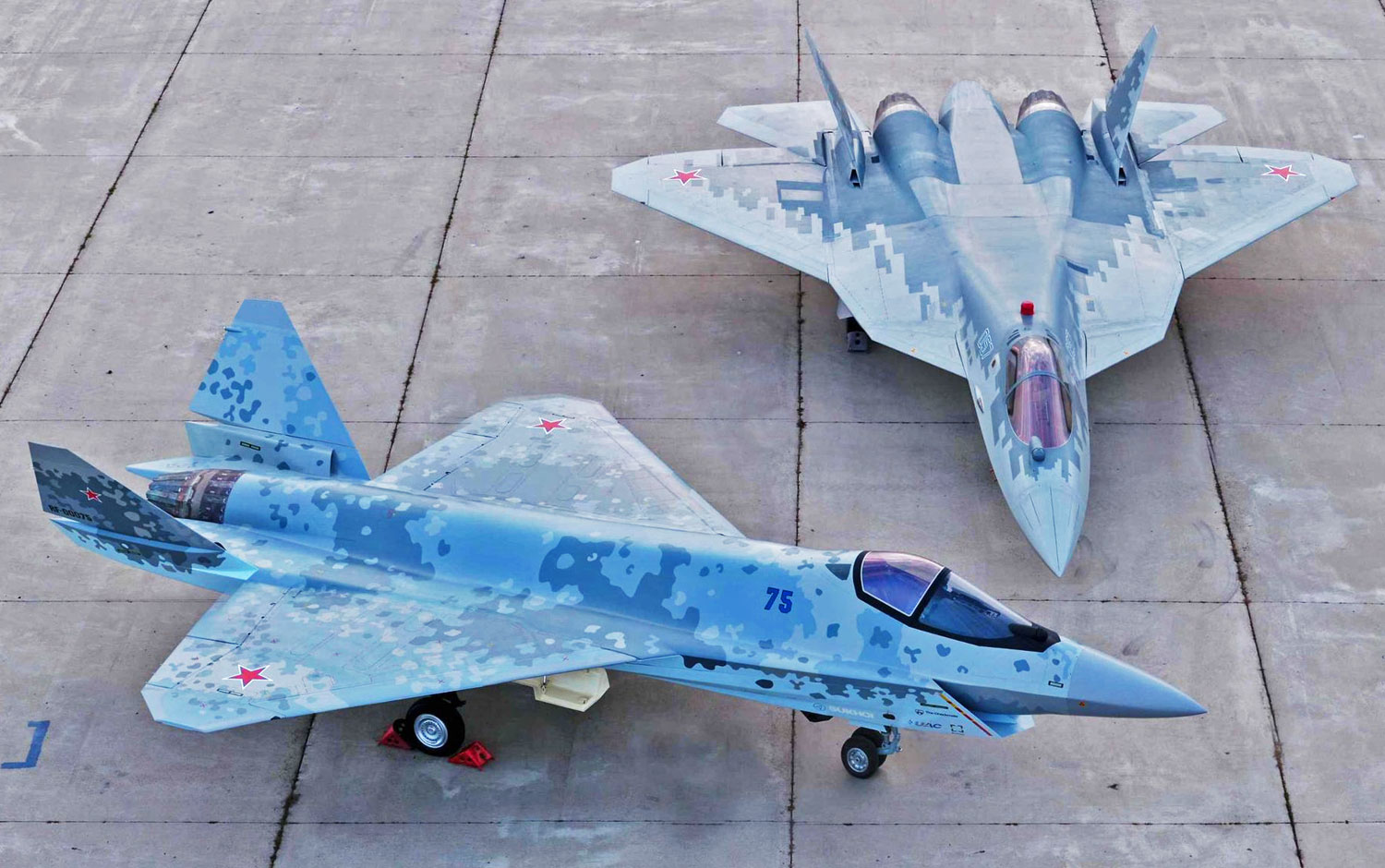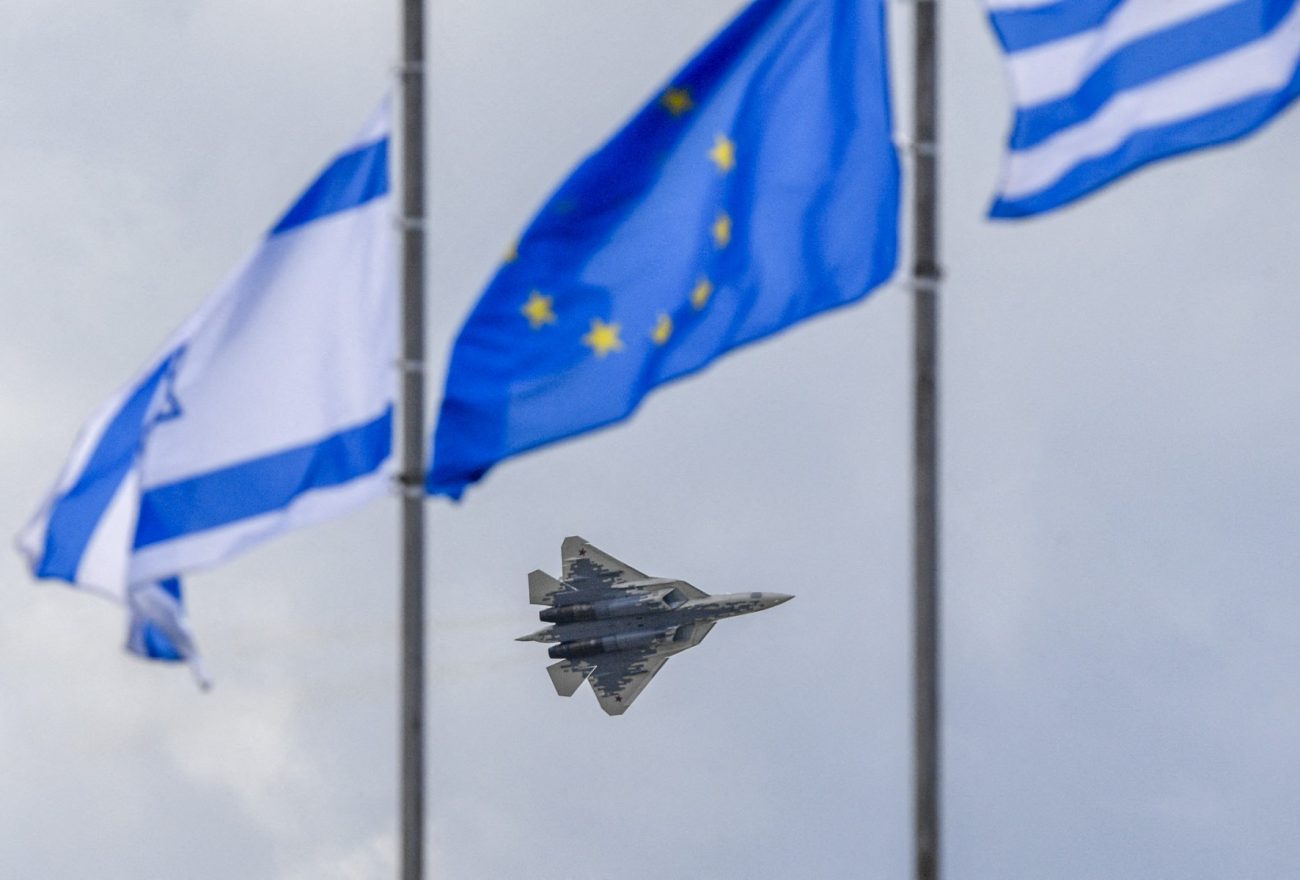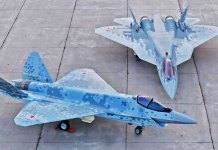Hindustan Aeronautics Limited (HAL), India’s state-owned aerospace and defense company, has expressed interest in collaborating with Russia to develop new fighter jet models.
“We are very comfortable working with Russia. There are no problems on our part, an HAL representative told TASS. The official also added that a very strong relationship exists between India and Russia, supported by years of joint production of MiG-21 and Su-30MKI fighter jets.
“We actively exchange experience with the Russians; Russian experts help us a lot,” he stated, referring to the existing cooperation between the two states.
The MiG-21 was India’s first supersonic fighter. India signed a deal with the USSR for the licensed production of the aircraft in 1962 and built hundreds of those fighter jets. The last batch of these combat aircraft was decommissioned last month, marking the end of an era.
Currently, the Su-30MKI multirole fighter, a tailored variant of the Su-30 incorporating Indian, Israeli, French, and Russian technologies, is manufactured by Hindustan Aeronautics Limited under a Russian license.
Meanwhile, on the Russian side, the project is carried out by the United Aircraft Corporation and the state arms exporter Rosoboronexport. A deal was recently signed for the production of 12 Su-30MKI aircraft at the HAL facility in Nashik, India. The existing older fighters are undergoing upgrades and modernisation, TASS noted.
Earlier this year, Russia offered to co-produce the fifth-generation Su-57 stealth fighters in India. Russian officials said that the existing Su-30MKI infrastructure at HAL could be leveraged to produce the stealth fighter.
“In case of a positive decision by the Indian side, the production of the Russian fifth-generation Su-57E fighter jet can be started at the factories currently producing the Su-30MKI fighter within a short time,” it stated in March 2025.
In line with this, Russian defense agencies were conducting internal analyses to ascertain the amount of capital needed to produce the in India last month. The idea has been to reduce costs, shorten timelines, and leverage existing infrastructure for added convenience.
However, the Indian Air Force (IAF) proposed an acquisition of 114 “Made in India” Rafale fighter jets to the Ministry of Defence (MoD) last month. It has reportedly called upon the MoD to bypass the Multi-Role Fighter Aircraft (MRFA) program and opt directly for the Rafale, according to reports.
IAF veteran and seasoned military commentator, Squadron Leader Vijainder K. Thakur (retd) notes: “In the past, HAL collaborated with Russian aircraft manufacturers to assemble and locally produce fighter aircraft for the IAF – MiG-21, MiG-27 & Su-30MKI. However, joint development was never previously considered. Joint development offers the advantage of Indian ownership. Beyond securing IPR for the weapon system and fostering self-reliance, it ensures that projects are not subject to import restrictions stemming from the hegemonistic ambitions of the US and its allies.”

Will Russia’s ‘Frozen Billions’ Fuel Ukraine’s War Efforts? EU’s $165B Scheme Tests Putin’s Resolve
Thakur argued that, “The TASS report could be general in nature, but it might also allude to a specific project such as the development of the Su-75 stealth fighter. Russia has previously indicated that it is open to joint-venture manufacturing of the Su-75 in a partner country. Such a venture would align perfectly with India’s Make-in-India and Atmanirbhar Bharat paradigms.”
“Alongside plugging the emerging stealth gap, local manufacture of the Su-75 in India could generate billions in export revenues, much like the BrahMos missile program and potentially the Su-30MKI modernization program.”
He also clarified that the manufacture of the Su-75 in India would not compromise the AMCA program. “The AMCA is a twin-engine medium-weight stealth fighter, whereas the Su-75 is a single-engine lightweight stealth fighter.
The two serve distinct operational roles,” he noted.
Earlier, in an interaction with the EurAsian Times, Air Marshal Anil Khosla (retired) said it needs to be approached from multiple fronts. “A cost-benefit analysis needs to be carried out before any commitment. Russia needs funding and development partners for the project; can India get more out of the deal? Also, the question that needs answering is whether the project will affect ‘Atma-Nirbharta’ (self-reliance).”
Russia has aggressively courted India as the primary partner for Su-75 production, leveraging longstanding defense ties, such as the production of Su-30MKI in India.
Some reports last year suggested that Sukhoi offered India sole global production rights for the Su-75, including a dedicated assembly line in India under the “Make in India” initiative. This would allow HAL to handle final assembly, integration, and potential exports.
Su-75 Checkmate Fighter
The Sukhoi Su-75 Checkmate is a single-engine, fifth-generation stealth fighter jet developed by Russia as an affordable export-oriented aircraft. It was first unveiled at the MAKS-2021 Air Show in Russia and made its international debut at the Dubai Airshow 2021 in the United Arab Emirates (UAE).
The Checkmate is designed for multi-role operations, including air superiority and ground attack, with features such as supercruise, advanced avionics, and low observability.
Besides India, Russia is also courting Arab countries for the development of this light-weight next-generation fighter.
It called on the Arab countries to engage in joint development of a new fighter jet using the Su-75 Checkmate light tactical aircraft platform. The proposition led military analysts to surmise that Moscow was seeking partners to finance and eventually acquire the fighter aircraft.
Last year, the EurAsian Times reported that Moscow had modified the initial design of the Su-75 Checkmate aircraft. A redesigned aircraft with a modified fuselage tail section was introduced, featuring larger flaperons and slightly longer wing leading-edge root extensions. The wing panels, which were taken from the Su-57, were also modified. This configuration differed from the one used in the previous patent application to the Russian Federal Service for Intellectual Property for the three versions: a single-seater fighter, a two-seat combat trainer, and an uncrewed aircraft.

While the aircraft’s design began in early 2020, it has been plagued by a slew of issues, including international sanctions imposed in the wake of Ukraine’s invasion, the absence of external funding for the aircraft, and a lack of interest from any country.
However, Russia is believed to be accelerating work on the aircraft whilst also carrying out modifications. In November 2024, Sergey Korotkov, Deputy General Director of the United Aircraft Corporation (UAC), a division of the state-owned arms manufacturer Rostec, said that the aircraft is now at a high stage of development.
Separately, Rostec stated last year that, based on feedback from potential buyers, technical changes were made to the aircraft to optimize costs.
Sukhoi has been claiming that the Su-75 is the first aircraft to be fully designed on supercomputers. Compared to traditional experiment-based development, supercomputer simulation enables rational design in a relatively shorter time and at a lower cost.
The aircraft notably boasts an open architecture that will help enable technical changes in the shortest timeframe. Rostec has also stated that the single-engine stealth fighter will include an inboard compartment for airborne air-to-air and air-to-surface weapons. It can hit up to six targets at once and can carry a payload of more than seven tons.
With an operational range of 3,000 kilometers, the Checkmate fighter will be capable of flying at Mach 1.8, or approximately 1.8 times the speed of sound.
According to Russian sources, the Su-75 boasts modern avionics, a suite of technologies that includes powerful network-centric combat capabilities, and artificial intelligence (AI) advancements for the pilot.
Additionally, Rostec states that the single-engine stealth fighter would have an inboard compartment for airborne air-to-air and air-to-surface munitions. It can carry a payload of more than seven tonnes and can hit up to six targets simultaneously.
The weapons will be carried in an internal weapons bay to enhance stealth. The aircraft is powered by the AL-41F1 engine that powers the Su-57.
If India proceeds with the purchase of Rafale and rejects the Su-57 offer, Russia could aggressively pitch the joint development of Checkmate to India, arguing that it is an entirely different class of aircraft due to its lightweight stealth fighter capabilities.
- Contact the author at sakshi.tiwari9555 (at) gmail.com
- Follow EurAsian Times on Google News




